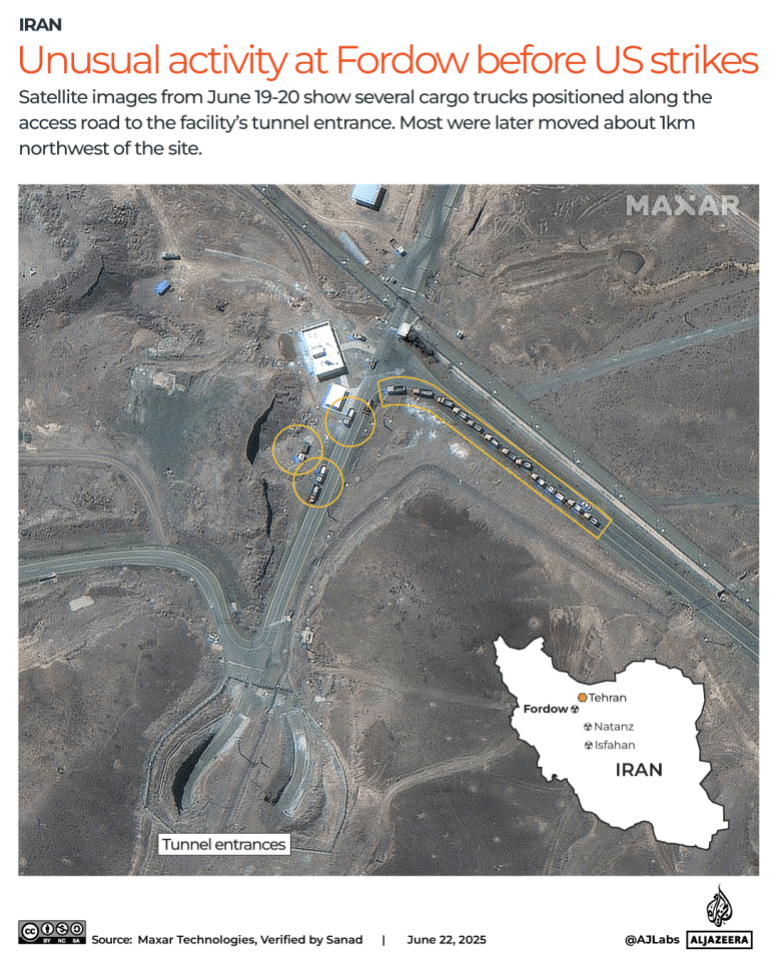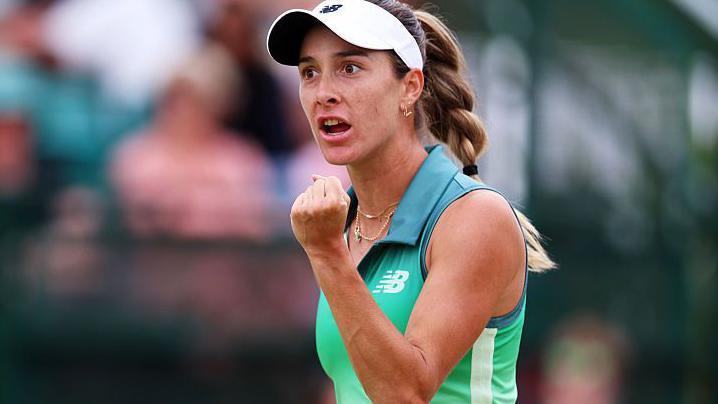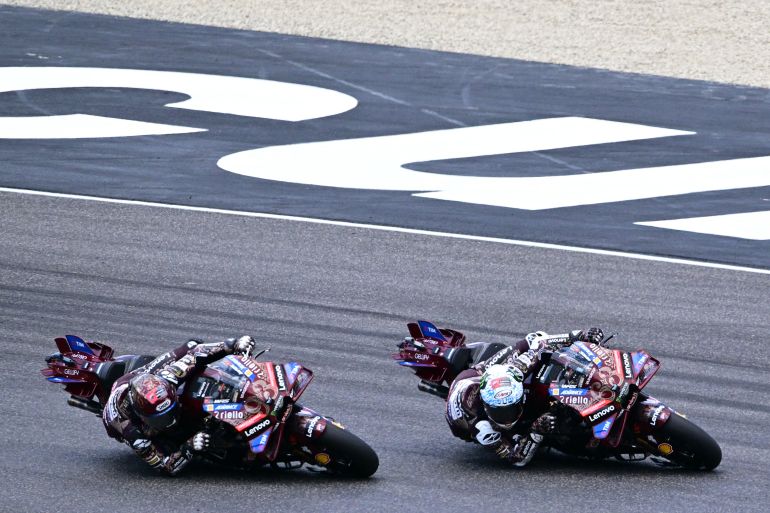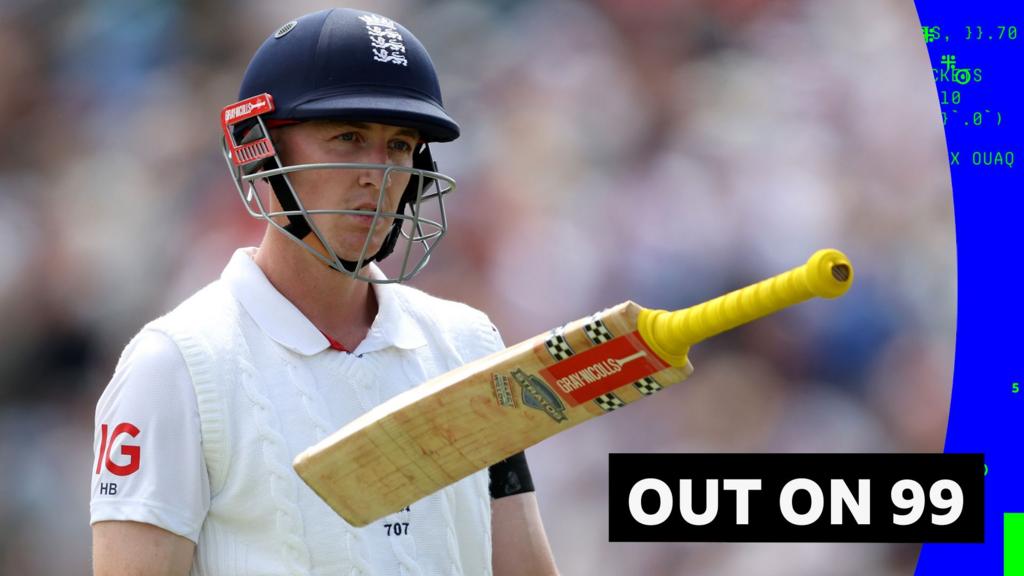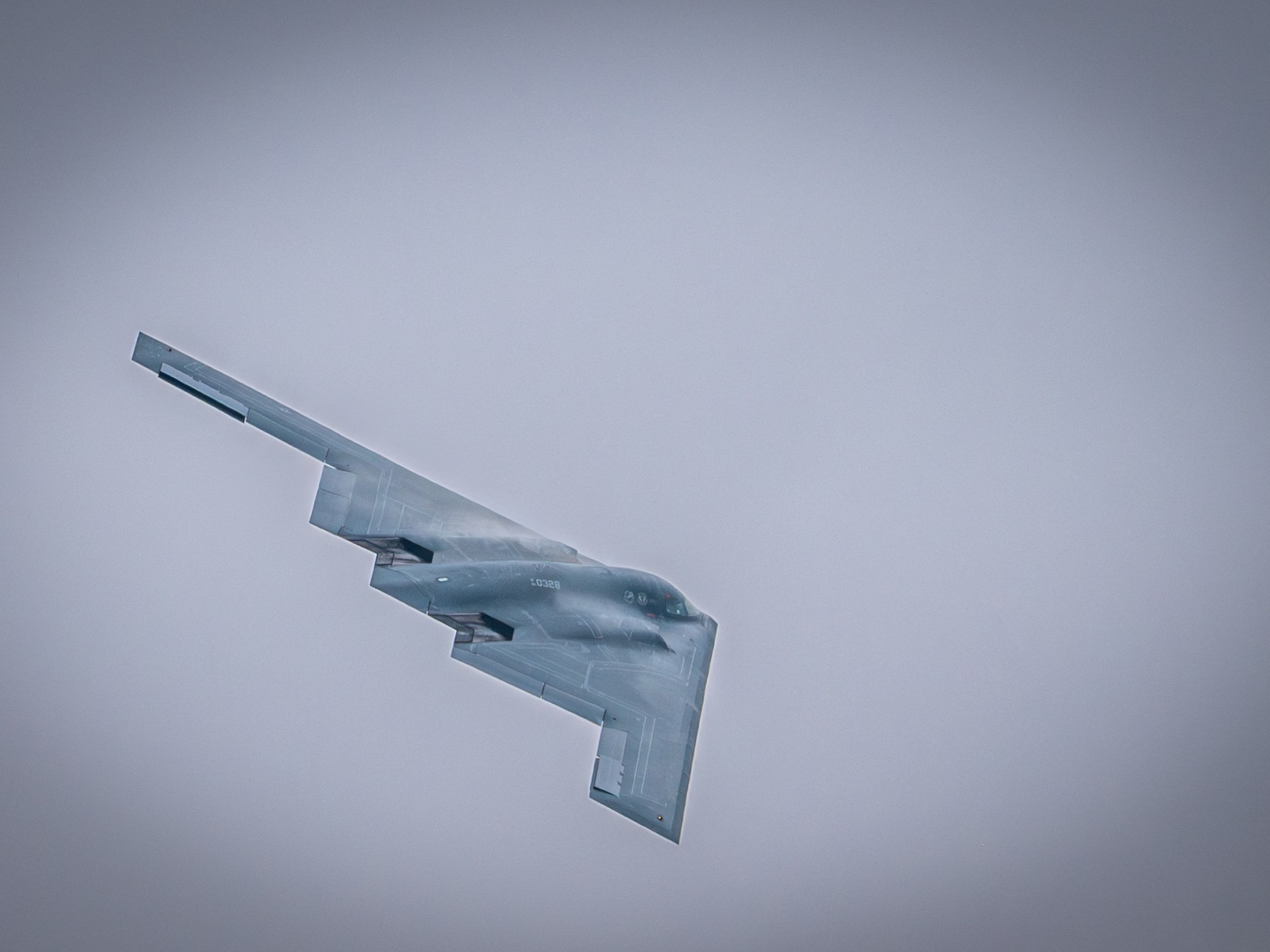Iran, Iran – Iranians both inside and outside the nation have closely monitored and responded to the country’s rapidly advancing events since Donald Trump’s administration ordered the bombing of Iran’s top nuclear sites in response to the country’s ongoing conflict with Israel.
Iran’s three main nuclear sites, Fordow, Natanz, and Isfahan, were hit early on Sunday by US bunker-buster bombs dropped from B-2 Spirit strategic bombers and Tomahawk cruise missile launches launched from naval platforms. Trump claimed that nuclear facilities had been “totally destroyed,” despite the lack of proof to date.
After a few hours, Iranian authorities confirmed the strikes, but said there was no radioactive leak. Additionally, the International Atomic Energy Agency (IAEA) verified that the site had not been contaminated off-site.
The government-run IRNA reported from a location close to Fordow, the most significant and difficult-to-reach nuclear site, that there was only a small amount of smoke rising from the area where air defenses were believed to be stationed and that there was no significant activity from emergency responders.
The massive GBU-57 bombs are thought to have burrowed deep underground before detonating in an effort to destroy Iranian nuclear installations dug beneath the mountains, according to satellite images that surfaced on Sunday.
According to Pir Hossein Kolivand, the head of Iran’s Red Crescent Society, no one has died as a result of US strikes.
In what appeared to be an Iranian advance on the destruction of the stored materials and equipment stored at the protected site in anticipation of US strikes, images also showed significant movement of trucks and bulldozers around Fordow in the days leading up to the strikes.
In a move to limit the damage from incoming bombs, heavy machinery also appeared to have been used to fill the facility’s entrance tunnels with earth.
Iranian Foreign Minister Abbas Araghchi made the observation that a military response from Tehran is unavoidable while speaking in Turkiye’s Istanbul while attending an OIC meeting.
He told reporters, “My country has been invaded, and we must respond.” We must show patience and a reasonable response to these aggressions. We will only make decisions regarding diplomatic options and the possibility of restarting negotiations if these measures are put in place.
Ayatollah Ali Khamenei, Iran’s Supreme Leader, warned in a televised message last week that a direct entry into the conflict would hurt Washington.
Its losses will be much greater than Iran’s potential harm, it will suffer. If the US engages in this conflict militarily, he said, “the harm the US will suffer will undoubtedly be irreparable.”
Call for action is made by hardliners.
Following the US strikes, Iranian state media and a large number of hardline politicians reacted furiously.
Saudi Arabia, Qatar, Kuwait, Bahrain, and Iraq, which are within easy reach of Iranian missiles, were shown on a map of US military installations across the region on state television’s Channel 3.
“It is now more obvious than ever that all US citizens and military personnel are legitimate targets, not just for the Iranian nation but for the entire people of the region,” said the statement. You chose to spill the blood of your soldiers while we were negotiating and making progress in a diplomatic manner. According to Mehdi Khanalizadeh, the channel’s anchor, the US president has chosen to deliver the coffins of up to 50 000 US soldiers in Washington.
Amirhossein Tahmasebi, a different anchor who had earlier defiant video broadcast from the state television IRIB buildings in northern Tehran after they were bombed by Israel last week, alleged that he “spits” on Trump and those who claim to be president of peace.
The ultraconservative head of the Bahraini newspaper, Hossein Shariatmadari, wrote: “It is now our turn to immediately rain missiles down on the US naval force in Bahrain as a first measure.”
He also reiterated his long-awaited request for Iran to close the strategic Strait of Hormuz, and stated that the country must block access to ships from the US, the UK, France, and Germany.
One of Iran’s parliamentarians, Hamid Rasaei, who is close to the Paydari (Steadfastness) faction led by security council member and unsuccessful presidential candidate Saeed Jalili, went one step further and demanded that Iran attack US bases in Saudi Arabia.
However, in recent years, Tehran and Riyadh’s relations have significantly thawed.
threats against “terrorism.”
The majority of Iranians are still unable to access the internet because of state-imposed internet restrictions, but those who have managed to locate a functioning proxy are also furious about the conflict.
In terms of the nuclear sites, one user wrote on X, “Thirty years of Iranian oil money and thirty years of economic opportunities that could have transformed tens of millions of people into citizens like the rest of the world have turned into three deep pits.”
Another user sarcastically wrote, “Trump says let me just drop the heaviest bomb in the world and then it will all be about peace.”
Asghar Farhadi, the two-time Oscar-winning director, posted a picture of Mount Damavand, the country’s highest peak at 5, 609 metres (18, 402 feet), captioned “Stalwart like Damavand, to the last breath for Iran.”
However, some Iranians who live abroad and are opposed to the country’s ruling theocracy, along with some who live there, were against the US and Israeli attacks in the belief that they might lead to the ouster of the ruling party.
Iranian authorities and the state media have been denounced and even threatened by this, as a result.
The state views those who support Israel and the US as “dishonorable opposition” who are “selling out their own country,” according to Elias Hazrati, the head of President Masoud Pezeshkian’s communications council, in a late-night state television interview on Saturday.
Iran’s Supreme National Security Council said those who willingly or unwillingly collaborated with Israel must turn themselves in by Sunday to avoid “the harshest punishment as fifth column and colluders with a hostile country during wartime,” according to a statement released on Friday.
